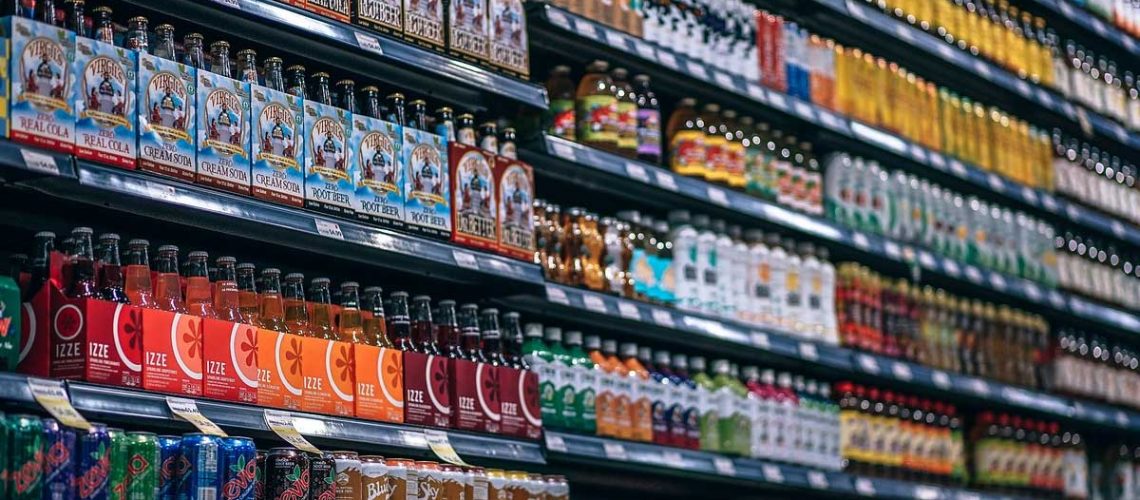You go to the gym several days a week trying to get rid of that unsightly belly fat that seems to have taken up permanent residence on your lap. After a good workout, you pass by the soda machines and grab a diet soda on the way out the door. You’re thirsty and you want something cold and sweet with a little kick to it. But what you don’t know is that drinking diet soda is negating your belly-blasting workout. It may also be setting you up for further serious disease as well. How could that be, you ask? Well, let me tell you why.
Diet Soda: The Hidden Belly Fat and Gut Health Risk
Even though I advocate a health-supporting diet most of the time, I’m all for little pleasure treats here and there. The problem is that many people believe that diet soda is no guilt, no repercussion treat so they indulge in it frequently in large quantities. I have patients who drink 1 liter of diet soda a day! Yet, they also wonder why that stubborn belly fat is just not moving, no matter how much cardio they do, or how much they cut calories. Especially if you’re over age 50.
On the surface, it doesn’t seem to make sense. Diet soda has no calories, fat, carbs, sugar in it. So, how could it make your belly so fat? Are people just eating more food because they’re being “good” drinking diet soda? No, that’s not it either.
Recently researchers out of the University of Texas Health Science Center believes they have found the reason why in one significant word: Inflammation.
Seems that inflammation, is cropping up where disease and unhealthy conditions are present. And in the case of diet soda and inflammation, there’s a hidden and rather surprising connection. The Texas researchers found that when you consume artificial sweeteners (like sucralose, aspartame, saccharin), and sugar alcohols, you cause inflammation in the lining of your gut. That inflammation seriously alters how your gut flora work.
Gut flora is a fancy term that really means all the microbacteria that live in your intestine that helps you process food and fight disease. In normal conditions, these gut flora produce short chain fatty acids that fuel your metabolism and produces energy for you. But, a constant diet of artificial sweeteners causes your gut flora to over-produce short chain fatty acids. Except your body can’t use all of them for energy so it starts storing them right on your belly.
In addition, satiety signals from your gut, which tell your brain you’ve had enough to eat, are short-circuited. Your brain, and you, thinks you haven’t eaten enough and keeps sending out hunger signals and sugar cravings.
Disrupted gut flora processes also slow your metabolism of carbohydrates from your food. You don’t use them for energy and your insulin levels must rise to clear the sugar from your blood. This creates a vicious cycle of constant hunger, craving for carbohydrates, and storing the unused energy from them right around your waistline. This cycle is associated with the pre-diabetes condition called metabolic syndrome.
In their study results, the Texas researchers found that, older people who drank diet soda, had nearly triple the waistline measurement of those who did not. Furthermore, the researchers concluded that diet soda drinking contributed to cardiovascular and metabolic disease risks. They recommended that older people greatly limit, or curtail, their diet soda drinking.
Not only does gut-lining inflammation derail your belly fat loss efforts, it actually damages gut tissue and can result in “leaky gut syndrome”. This is where your gut bacteria leaks into your blood stream causing inflammation of your vascular system. Your blood stream carries this inflammation to every part of your body. It can set the stage for the development of, not only type 2 diabetes, but heart disease and possibly cancer.
However, there is a way you can stop this detrimental process. You can recolonize your gut flora, turn off the inflammation process, and get on the road to not only losing that belly fat, but preventing serious disease. Here’s how:
1. Replace artificial sweeteners with stevia. If you must drink soda, there are a few brands of soda available from health food stores that are stevia-sweetened. You can also make your own flavored water drink with a few squirts of fresh lemon, lime, orange, or berry juice sweetened with stevia. There’s also flavored stevia cola, raspberry, chocolate, etc, to mix into either plain water or carbonated water to make your own healthier soft drink.
2. Recolonize your gut. Take an acidophilus supplement, or eat Kefir, yogurt with active cultures, or other fermented foods to promote good bacteria.
3. Eat more alkali foods. Artificial sweeteners, refined sugar, and fructose create a high acid environment which promotes inflammation. Add more alkali foods to your diet to help cool down inflammation and heal your gut.
The truth is, diet soda is not the only thing you may be consuming that has artificial sweetener or sugar alcohols in it. If you’re like most people trying to lose belly fat, you may also be eating what are marketed as “sugar-free” or “diet” protein bars, candies, drinks, condiments, baked goods, etc that contain them. Switching to regular soda doesn’t cure the problem either. Both high fructose corn syrup, touted as a “natural” sweetener, and refined sugar, also cause bad gut flora to overgrow and create inflammation.
Get into the habit of reading labels and stop consuming products that contain these sweeteners. It’s the first step on the road to recovering your gut flora health and getting rid of that stubborn belly fat.
Stay Well,
Ron Blankstein, M.D.

